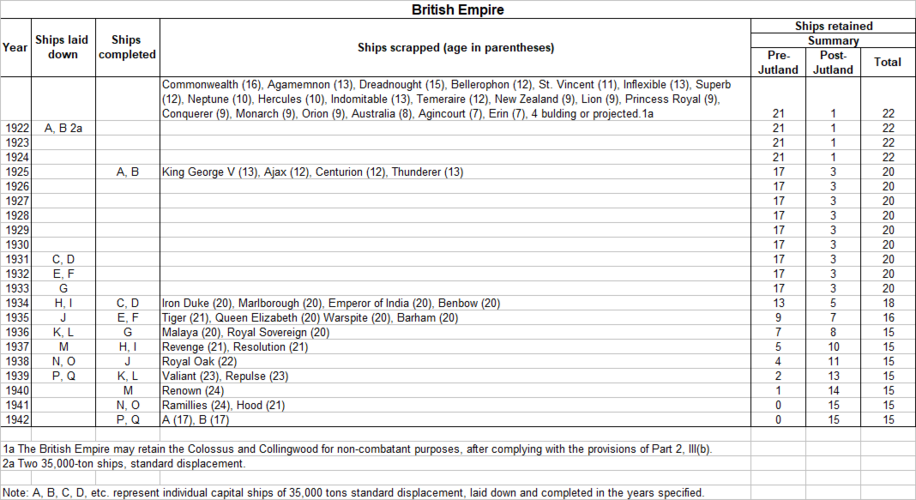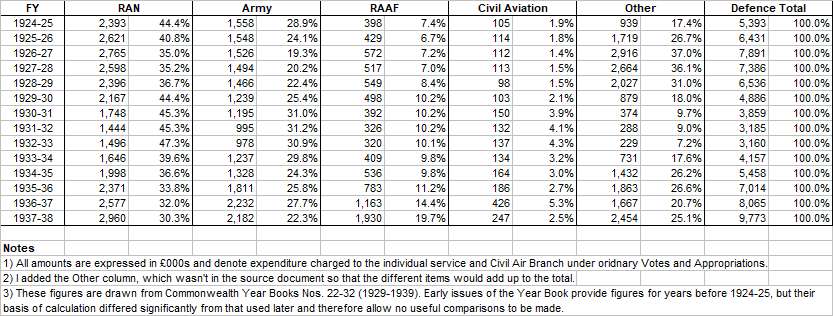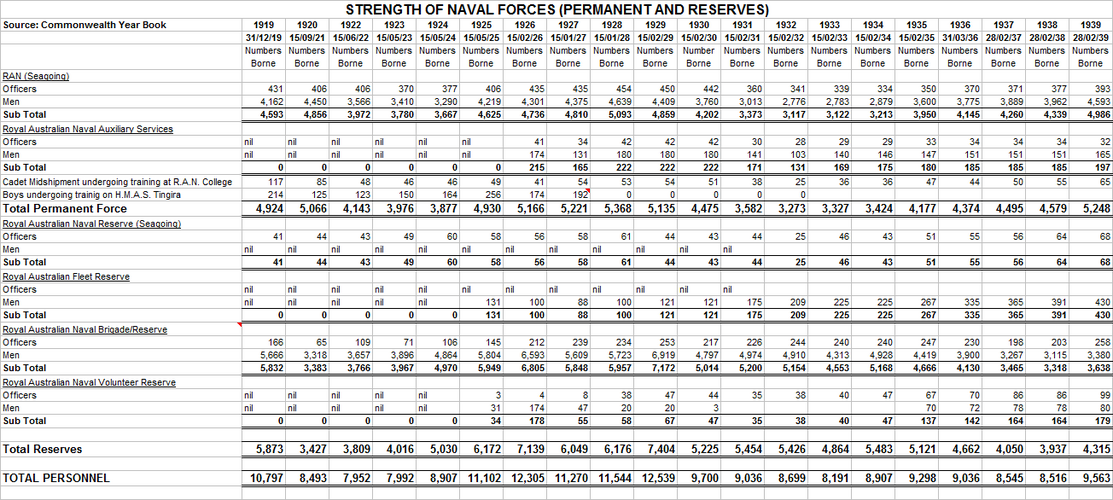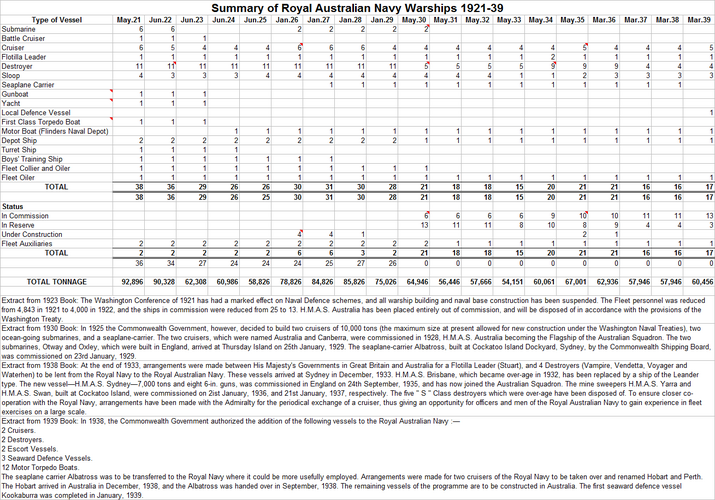Part of Post 92.
Sir John Monash's naval shipbuilding review found that building the heavy cruisers at Cockatoo might cost up to £3,400,000. Interestingly, building Australia and Canberra in the UK is said to eventually cost around £1,900,000 per ship...
Are they the Vote 8 costs? I.e. ex-guns?
Vote 8 refers to Vote 8 of the British Navy Estimates -
"Shipbuilding, Repairs, Maintenance, &c." - the cost of the guns was in Vote 9 of the Navy Estimates -
"Naval Armaments".
Sources like Brown and contemporary editions of Jane's say the County class cost about £2 million each, but they appear to be quoting the Vote 8 cost.
That's because I've got a copy of a Cabinet Paper from October 1937 on the British Rearmament Programme which includes a table called
"Cost of Construction of Various Classes of Ships", which said the cost of a Kent class cruiser was £2,400,000.
EDIT - For what its worth, these are the
"Approximate Total Costs" quoted in that table.
£2,350,000 Benbow
£2,350,000 Iron Duke
£7,500,000 Nelson
£7,600,000 Rodney
£8,000,000 King George V (including aircraft, £75,000)
£2,400,000 Kent
£2,175,000 Glasgow (including aircraft, £55,700)
£2,200,000 Liverpool (including aircraft, £55,700)
£1,400,000 Penelope & Aurora (including aircraft, £22,000)
£420,000 Lowestoft & Nottingham (WWI Town class cruisers)
£140,000 WWI "L" class destroyer
£335,000 "A" class destroyer
£380,000 "I" class destroyer
£575,000 "K" class destroyer
£595,000 Tribal class destroyer







